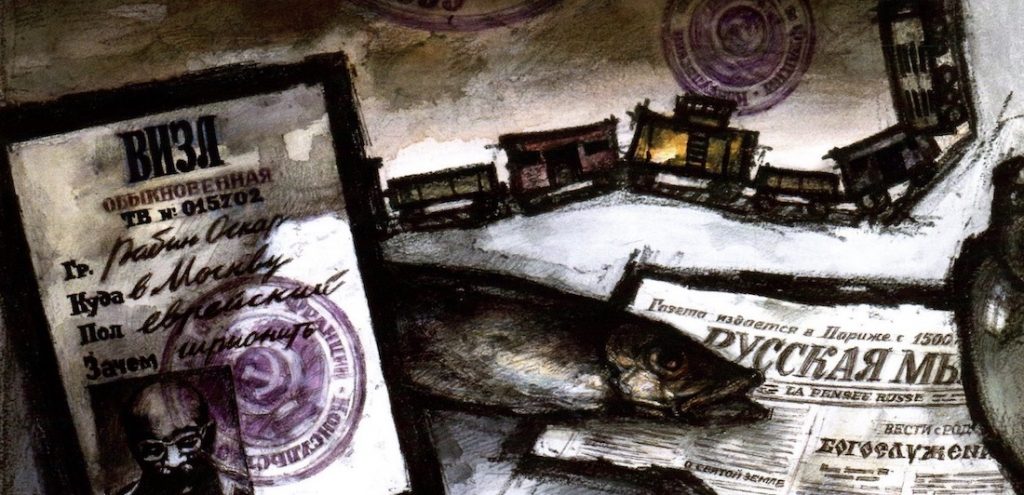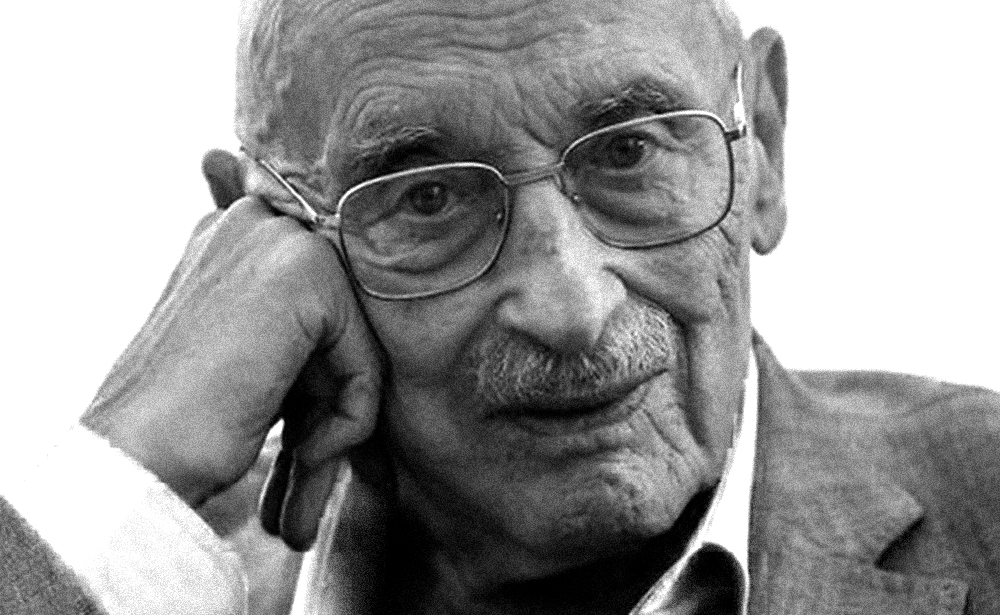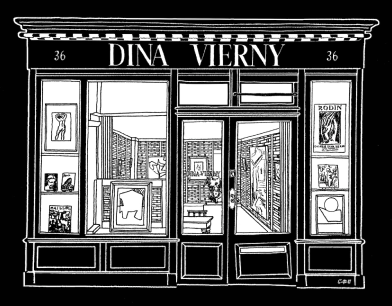

Born in Moscow, Oscar Rabine learnt to paint under Evgueni Kropivnitski. In the 1950s, he moved with his wife to the suburbs of Moscow and earned a living subsequently as a railway supervisor, worker and advertising designer. He decided to fully commit to painting in 1958 following the birth of the Lianosovo Group. As a true leading figure of the artists committed to the freedom of expression, Oscar Rabine belongs to the great non-conformist movement of the 60s and 70s. As a defender of non-official art, in 1974, he organized…
Born in Moscow, Oscar Rabine learnt to paint under Evgueni Kropivnitski. In the 1950s, he moved with his wife to the suburbs of Moscow and earned a living subsequently as a railway supervisor, worker and advertising designer. He decided to fully commit to painting in 1958 following the birth of the Lianosovo Group.
As a true leading figure of the artists committed to the freedom of expression, Oscar Rabine belongs to the great non-conformist movement of the 60s and 70s. As a defender of non-official art, in 1974, he organized the well-known open air exhibition “bulldozer” in Moscow. This attempt to present art without any censorship was swept away by the authorities. The works exhibited were seized and Oscar Rabine was later stripped of his nationality in 1978.
Expelled, Oscar Rabine moved to Paris with his family. He there became a free artist, independent of any political movement, and came to acquire an international reputation.
The Russian Ambassador to France eventually returned his passport in 2006. A year later, he was granted the Innovation prize at the Pushkin Museum in Moscow. Thereafter, Oscar Rabine was appointed to the Order of the Academy of Fine Art of Russia.
Rabine’s art is a powerful testimonial to his own life, divided between Russia and France. His paintings bear the imprint of his passion in the generous use of materials in his landscapes, still lifes, portraits and other themes. He was greatly inspired by his everyday life, taking objects to transform them into symbols so as to offer a reflection on the meaning of life. Through the use of drawing, oils, collages and cutouts, his paintings are located between realism and expressionism. Using black outlines and subtle monochrome tints in his unstable compositions, he depicts heterogeneous objects such as his passport, bottles of vodka, bottles of champagne, cigarette ends and herrings, among other things.
“In my painting, I feel pleasure in the process itself, by mixing and applying colors and by enjoying their brightness and darkness, their broad, subtle brushstrokes as well as their smell. Then I wish to express sadness, happiness, hate, anger, love and all the thoughts of life. I want to capture the meaning of life and express it using my own feeloings. To achieve this, for symbols, I use ordinary objects around me. Their meaning in painting is different from their meaning in real life.”. Oscar Rabine
Oscar Rabine ou la tentation de l’Occident, Galerie Artbiblio, Paris (March 16 – April 14)
Oscar Rabine – Peintures, Galerie Vieceli, Cannes
Oscar Rabine, œuvres sur papier, Galerie Dina Vierny, Paris (September 16 – December 15)
Galerie Mimi Fertz, New York
Oscar Rabin. Three Lives. The Retrospective Exhibition / Almanac, The State Tretyakov Gallery, Moscow
A & C Projects, Musée d’art et d’archéologie du Périgord, Périgueux
A & C Projects, Peter Nahum, Galeries Leicester, London
Galerie Mimi Fertz, New York
Galerie Esch Théâtre, Esch-sur-Alzette
Centre culturel des institutions européennes, Luxembourg
State Russian Museum, Saint-Pétersbourg
Galerie Le Monde de l’Art, Paris
Galerie Marie-Thérèse Cochin, Paris
Galerie Die Facette, Herrenberg
Galerie Eduard Nakhamkin, New York
Galerie Miro-Spizman, London
Galerie Marie-Thérèse Cochin, Paris
Galerie Holst Halversens, Oslo
Museum of Russian Modern Art, Jersey
Galerie Marie-Thérèse Cochin, Paris
Galerie Holst Halversens, Oslo
Galerie Art sans frontières, Strasbourg
Galerie Steink, Vienna
Galerie Chantepierre, Aubonne
Galerie Holst Halversens, Oslo
Galerie Grazia Gerbino, Paris
Galerie Chantepierre, Aubonne
Parkway Focus Gallery, London
Galerie Jacquester, Paris
Grosvenor Gallery, London
70 ans déjà, Galerie Dina Vierny, Paris (January 25 – March 24)
Breaking the Ice: Mosow Art 1960-80, Saatchi Gallery, London
Le portrait d’artiste et le regard non-conformiste, Galerie Russkiy Mir, Paris
Le Musée Maillol s’expose, Fondation Dina Vierny – Musée Maillol, Paris
Oscar Rabine, Valentina Kropivnitskaïa, Alexandre Rabine, Pushkin Museum, Moscow
Russia !, Musée Guggenheim, Bilbao (March 29 – October 9)
Russian Paris in New York, Museum of Russian Contemporary Art, Jersey
Portrait of the artist in his interior, New Hermitage Gallery, Moscow
The non-conformists of Moscow, Ludwig Museum, Coblence
Berlin-Moscow/Moscow-Berlin, 1950-2000, Martin Gropius-Bau Museum, Berlin
Portrait in Russia in the 20th century, State Russian Museum, Saint-Petersburg
Art underground, Albertina, Vienna
Game and passion, State Russian Museum, Saint-Petersburg
Eugene Noutovitch Collection, Musée Alexandre Pouchkine, Moscow
Face à l’histoire, 1933-1996, Centre Georges Pompidou, Paris (December 19 – April 7, 1997)
From Gulag to Glasnost, Zimmerli Art Museum, New Jersey
Musée Maillol – Fondation Dina Vierny, Paris, France
Von Malewitsch bis Kabakov : russische Avantgarde im 20 Jahrhundert : die Sammlung Ludwig, Josef-Haubrich Kunsthalle, Köln (October 16 – January 2, 1994)
Lianazovo Group, Museum of Literature, Moscow
Lianazovo Group, Musée d’art russe contemporain, Montgeron
Unofficial Russian Art, Institute of Modern Art, London
Peinture russe contemporaine, Palais des Congrès, Paris
8 artistes moscovites, Musée de Grenoble, Grenoble
Avant-garde russe, Galerie Dina Vierny, Paris
Progressive trends in Moscow, Bochum Museum, Bochum
New trends in Moscow, Museum of Fine Arts, Lugano
Moscow New school, Galerie Interior, Frankfurt
Sixteen Moscow artists, Sopot-Poznan
World Festival of Youth and Students, Moscow
Born in Moscow, Oscar Rabine learnt to paint under Evgueni Kropivnitski. In the 1950s, he moved with his wife to the suburbs of Moscow and earned a living subsequently as a railway supervisor, worker and advertising designer. He decided to fully commit to painting in 1958 following the birth of the Lianosovo Group.
As a true leading figure of the artists committed to the freedom of expression, Oscar Rabine belongs to the great non-conformist movement of the 60s and 70s. As a defender of non-official art, in 1974, he organized the well-known open air exhibition “bulldozer” in Moscow. This attempt to present art without any censorship was swept away by the authorities. The works exhibited were seized and Oscar Rabine was later stripped of his nationality in 1978.
Expelled, Oscar Rabine moved to Paris with his family. He there became a free artist, independent of any political movement, and came to acquire an international reputation.
The Russian Ambassador to France eventually returned his passport in 2006. A year later, he was granted the Innovation prize at the Pushkin Museum in Moscow. Thereafter, Oscar Rabine was appointed to the Order of the Academy of Fine Art of Russia.
Rabine’s art is a powerful testimonial to his own life, divided between Russia and France. His paintings bear the imprint of his passion in the generous use of materials in his landscapes, still lifes, portraits and other themes. He was greatly inspired by his everyday life, taking objects to transform them into symbols so as to offer a reflection on the meaning of life. Through the use of drawing, oils, collages and cutouts, his paintings are located between realism and expressionism. Using black outlines and subtle monochrome tints in his unstable compositions, he depicts heterogeneous objects such as his passport, bottles of vodka, bottles of champagne, cigarette ends and herrings, among other things.
“In my painting, I feel pleasure in the process itself, by mixing and applying colors and by enjoying their brightness and darkness, their broad, subtle brushstrokes as well as their smell. Then I wish to express sadness, happiness, hate, anger, love and all the thoughts of life. I want to capture the meaning of life and express it using my own feeloings. To achieve this, for symbols, I use ordinary objects around me. Their meaning in painting is different from their meaning in real life.”. Oscar Rabine
Oscar Rabine ou la tentation de l’Occident, Galerie Artbiblio, Paris (March 16 – April 14)
Oscar Rabine – Peintures, Galerie Vieceli, Cannes
Oscar Rabine, œuvres sur papier, Galerie Dina Vierny, Paris (September 16 – December 15)
Galerie Mimi Fertz, New York
Oscar Rabin. Three Lives. The Retrospective Exhibition / Almanac, The State Tretyakov Gallery, Moscow
A & C Projects, Musée d’art et d’archéologie du Périgord, Périgueux
A & C Projects, Peter Nahum, Galeries Leicester, London
Galerie Mimi Fertz, New York
Galerie Esch Théâtre, Esch-sur-Alzette
Centre culturel des institutions européennes, Luxembourg
State Russian Museum, Saint-Pétersbourg
Galerie Le Monde de l’Art, Paris
Galerie Marie-Thérèse Cochin, Paris
Galerie Die Facette, Herrenberg
Galerie Eduard Nakhamkin, New York
Galerie Miro-Spizman, London
Galerie Marie-Thérèse Cochin, Paris
Galerie Holst Halversens, Oslo
Museum of Russian Modern Art, Jersey
Galerie Marie-Thérèse Cochin, Paris
Galerie Holst Halversens, Oslo
Galerie Art sans frontières, Strasbourg
Galerie Steink, Vienna
Galerie Chantepierre, Aubonne
Galerie Holst Halversens, Oslo
Galerie Grazia Gerbino, Paris
Galerie Chantepierre, Aubonne
Parkway Focus Gallery, London
Galerie Jacquester, Paris
Grosvenor Gallery, London
70 ans déjà, Galerie Dina Vierny, Paris (January 25 – March 24)
Breaking the Ice: Mosow Art 1960-80, Saatchi Gallery, London
Le portrait d’artiste et le regard non-conformiste, Galerie Russkiy Mir, Paris
Le Musée Maillol s’expose, Fondation Dina Vierny – Musée Maillol, Paris
Oscar Rabine, Valentina Kropivnitskaïa, Alexandre Rabine, Pushkin Museum, Moscow
Russia !, Musée Guggenheim, Bilbao (March 29 – October 9)
Russian Paris in New York, Museum of Russian Contemporary Art, Jersey
Portrait of the artist in his interior, New Hermitage Gallery, Moscow
The non-conformists of Moscow, Ludwig Museum, Coblence
Berlin-Moscow/Moscow-Berlin, 1950-2000, Martin Gropius-Bau Museum, Berlin
Portrait in Russia in the 20th century, State Russian Museum, Saint-Petersburg
Art underground, Albertina, Vienna
Game and passion, State Russian Museum, Saint-Petersburg
Eugene Noutovitch Collection, Musée Alexandre Pouchkine, Moscow
Face à l’histoire, 1933-1996, Centre Georges Pompidou, Paris (December 19 – April 7, 1997)
From Gulag to Glasnost, Zimmerli Art Museum, New Jersey
Musée Maillol – Fondation Dina Vierny, Paris, France
Von Malewitsch bis Kabakov : russische Avantgarde im 20 Jahrhundert : die Sammlung Ludwig, Josef-Haubrich Kunsthalle, Köln (October 16 – January 2, 1994)
Lianazovo Group, Museum of Literature, Moscow
Lianazovo Group, Musée d’art russe contemporain, Montgeron
Unofficial Russian Art, Institute of Modern Art, London
Peinture russe contemporaine, Palais des Congrès, Paris
8 artistes moscovites, Musée de Grenoble, Grenoble
Avant-garde russe, Galerie Dina Vierny, Paris
Progressive trends in Moscow, Bochum Museum, Bochum
New trends in Moscow, Museum of Fine Arts, Lugano
Moscow New school, Galerie Interior, Frankfurt
Sixteen Moscow artists, Sopot-Poznan
World Festival of Youth and Students, Moscow

Born in Moscow, Oscar Rabine learnt to paint under Evgueni Kropivnitski. In the 1950s, he moved with his wife to the suburbs of Moscow and earned a living subsequently as a railway supervisor, worker and advertising designer. He decided to fully commit to painting in 1958 following the birth of the Lianosovo Group. As a true leading figure of the artists committed to the freedom of expression, Oscar Rabine belongs to the great non-conformist movement of the 60s and 70s. As a defender of non-official art, in 1974, he organized…
Born in Moscow, Oscar Rabine learnt to paint under Evgueni Kropivnitski. In the 1950s, he moved with his wife to the suburbs of Moscow and earned a living subsequently as a railway supervisor, worker and advertising designer. He decided to fully commit to painting in 1958 following the birth of the Lianosovo Group.
As a true leading figure of the artists committed to the freedom of expression, Oscar Rabine belongs to the great non-conformist movement of the 60s and 70s. As a defender of non-official art, in 1974, he organized the well-known open air exhibition “bulldozer” in Moscow. This attempt to present art without any censorship was swept away by the authorities. The works exhibited were seized and Oscar Rabine was later stripped of his nationality in 1978.
Expelled, Oscar Rabine moved to Paris with his family. He there became a free artist, independent of any political movement, and came to acquire an international reputation.
The Russian Ambassador to France eventually returned his passport in 2006. A year later, he was granted the Innovation prize at the Pushkin Museum in Moscow. Thereafter, Oscar Rabine was appointed to the Order of the Academy of Fine Art of Russia.
Rabine’s art is a powerful testimonial to his own life, divided between Russia and France. His paintings bear the imprint of his passion in the generous use of materials in his landscapes, still lifes, portraits and other themes. He was greatly inspired by his everyday life, taking objects to transform them into symbols so as to offer a reflection on the meaning of life. Through the use of drawing, oils, collages and cutouts, his paintings are located between realism and expressionism. Using black outlines and subtle monochrome tints in his unstable compositions, he depicts heterogeneous objects such as his passport, bottles of vodka, bottles of champagne, cigarette ends and herrings, among other things.
“In my painting, I feel pleasure in the process itself, by mixing and applying colors and by enjoying their brightness and darkness, their broad, subtle brushstrokes as well as their smell. Then I wish to express sadness, happiness, hate, anger, love and all the thoughts of life. I want to capture the meaning of life and express it using my own feeloings. To achieve this, for symbols, I use ordinary objects around me. Their meaning in painting is different from their meaning in real life.”. Oscar Rabine
Oscar Rabine ou la tentation de l’Occident, Galerie Artbiblio, Paris (March 16 – April 14)
Oscar Rabine – Peintures, Galerie Vieceli, Cannes
Oscar Rabine, œuvres sur papier, Galerie Dina Vierny, Paris (September 16 – December 15)
Galerie Mimi Fertz, New York
Oscar Rabin. Three Lives. The Retrospective Exhibition / Almanac, The State Tretyakov Gallery, Moscow
A & C Projects, Musée d’art et d’archéologie du Périgord, Périgueux
A & C Projects, Peter Nahum, Galeries Leicester, London
Galerie Mimi Fertz, New York
Galerie Esch Théâtre, Esch-sur-Alzette
Centre culturel des institutions européennes, Luxembourg
State Russian Museum, Saint-Pétersbourg
Galerie Le Monde de l’Art, Paris
Galerie Marie-Thérèse Cochin, Paris
Galerie Die Facette, Herrenberg
Galerie Eduard Nakhamkin, New York
Galerie Miro-Spizman, London
Galerie Marie-Thérèse Cochin, Paris
Galerie Holst Halversens, Oslo
Museum of Russian Modern Art, Jersey
Galerie Marie-Thérèse Cochin, Paris
Galerie Holst Halversens, Oslo
Galerie Art sans frontières, Strasbourg
Galerie Steink, Vienna
Galerie Chantepierre, Aubonne
Galerie Holst Halversens, Oslo
Galerie Grazia Gerbino, Paris
Galerie Chantepierre, Aubonne
Parkway Focus Gallery, London
Galerie Jacquester, Paris
Grosvenor Gallery, London
70 ans déjà, Galerie Dina Vierny, Paris (January 25 – March 24)
Breaking the Ice: Mosow Art 1960-80, Saatchi Gallery, London
Le portrait d’artiste et le regard non-conformiste, Galerie Russkiy Mir, Paris
Le Musée Maillol s’expose, Fondation Dina Vierny – Musée Maillol, Paris
Oscar Rabine, Valentina Kropivnitskaïa, Alexandre Rabine, Pushkin Museum, Moscow
Russia !, Musée Guggenheim, Bilbao (March 29 – October 9)
Russian Paris in New York, Museum of Russian Contemporary Art, Jersey
Portrait of the artist in his interior, New Hermitage Gallery, Moscow
The non-conformists of Moscow, Ludwig Museum, Coblence
Berlin-Moscow/Moscow-Berlin, 1950-2000, Martin Gropius-Bau Museum, Berlin
Portrait in Russia in the 20th century, State Russian Museum, Saint-Petersburg
Art underground, Albertina, Vienna
Game and passion, State Russian Museum, Saint-Petersburg
Eugene Noutovitch Collection, Musée Alexandre Pouchkine, Moscow
Face à l’histoire, 1933-1996, Centre Georges Pompidou, Paris (December 19 – April 7, 1997)
From Gulag to Glasnost, Zimmerli Art Museum, New Jersey
Musée Maillol – Fondation Dina Vierny, Paris, France
Von Malewitsch bis Kabakov : russische Avantgarde im 20 Jahrhundert : die Sammlung Ludwig, Josef-Haubrich Kunsthalle, Köln (October 16 – January 2, 1994)
Lianazovo Group, Museum of Literature, Moscow
Lianazovo Group, Musée d’art russe contemporain, Montgeron
Unofficial Russian Art, Institute of Modern Art, London
Peinture russe contemporaine, Palais des Congrès, Paris
8 artistes moscovites, Musée de Grenoble, Grenoble
Avant-garde russe, Galerie Dina Vierny, Paris
Progressive trends in Moscow, Bochum Museum, Bochum
New trends in Moscow, Museum of Fine Arts, Lugano
Moscow New school, Galerie Interior, Frankfurt
Sixteen Moscow artists, Sopot-Poznan
World Festival of Youth and Students, Moscow
Galerie Dina Vierny
36 rue Jacob 75006 Paris
Open from Tuesday to Saturday from 10 a.m. to 7 p.m.
Galerie Dina Vierny
36 rue Jacob 75006 Paris
Open from Tuesday to Saturday from 10 a.m. to 7 p.m.
